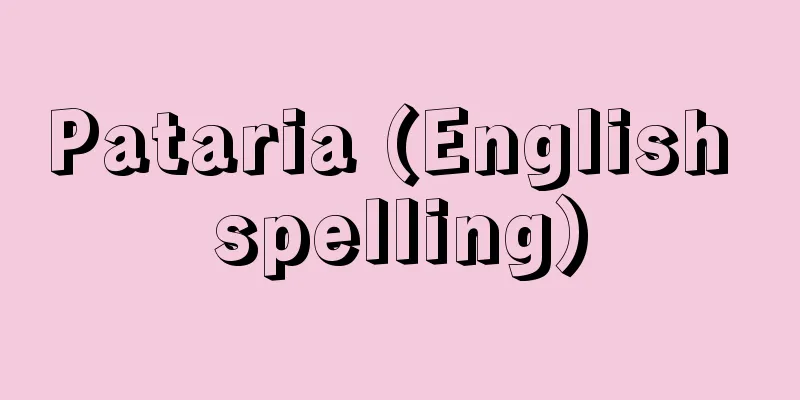Student mobilization

|
During the Pacific War, students and pupils were sent to war due to the suspension of conscription deferral measures. The war, which had lasted for over 10 years since the Manchurian Incident in 1931 (Showa 6), had consumed a great number of soldiers, and the shortage of lower-level commanders in particular had become a serious problem. As a result, the military turned its attention to students who were already subject to military training. Until then, students enrolled in schools designated by imperial decree (schools approved by the Ministry of Education) had been able to "postpone conscription" until they reached the age of 26. In response to this, the military had been shortening the length of study and graduating students early since October 1941, but in September 1943 the Tojo Hideki cabinet decided on "measures to strengthen the domestic posture," and on October 2nd it issued the Imperial Ordinance "Temporary Special Provisions for Postponement of Conscription for Students in School," which completely revoked the deferment of conscription for students. At a cabinet meeting on the 12th of the same month, it was decided that liberal arts universities and vocational schools would be reorganized through relocation and consolidation, and that students and pupils at universities other than science, engineering, medicine and teacher training schools, as well as elementary vocational schools, who had reached the age of 20, would be conscripted. The first group of student soldiers enlisted on December 1st of the same year (Army), and on the 10th of the same month (Navy). Prior to this, on October 21st, a send-off ceremony for the students going off to war was held in the autumn rain at Meiji Jingu Gaien Athletics Stadium in Tokyo. Prime Minister Tojo addressed the students, saying, "This is the only way for you to live for the eternal cause," and the student representatives vowed, "We will destroy the stubborn enemy with our own lives, without expecting to return alive." Thus, the number of student soldiers who were deprived of the privilege of deferment of conscription and went to war in the middle of their studies is estimated to be over 200,000. The student soldiers were assigned to army and navy units, and after a short training period, they were sent to the front lines in mainland China, the southern front, and the South Pacific, where many were killed in battle. Many of them were torn between their passion for academic research and the demands of their nation, and they lost their young lives in the mountains and fields of the continent and the far reaches of the South Seas, harboring doubts about the war and worries about the future of Japan. The majority of the students who went to war in the first group were born between 1921 (Taisho 10) and 1923, and suffered the greatest number of war deaths. In 1947 (Showa 22), after Japan's defeat in the war, the memoir "Over the Faraway Mountains and Rivers," a memoir by a University of Tokyo student who died in war, was published, and in 1949, "Listen to the Voices of the Sea," a memoir by students from universities across the country who died in war, was published. In April 1950, in order to prevent such horrors and tragedies caused by war from being repeated, the Japan War Fallen Students Memorial Association (commonly known as the "Wadatsumi Association") was formed to pass on the experiences of the war to future generations, and continues to work for peace and non-war. [Tokuzo Yoshimura] "The 80-Year History of the Educational System" (1954), compiled and published by the Ministry of Education ; " The New Edition of 'Student Conscription' by Takeshi Yasuda (1977, Sanseido)" [Reference] |Source: Shogakukan Encyclopedia Nipponica About Encyclopedia Nipponica Information | Legend |
|
太平洋戦争下で行われた徴兵猶予措置の停止に伴う学生・生徒の出陣。1931年(昭和6)の満州事変以来10年余の戦争はおびただしく兵を消耗し、とくに下級指揮官の不足は深刻な問題となり、そのため、すでに軍事教練の課せられていた学生たちに軍の目が向けられた。それまで、勅令に定められた学校(文部省認可の学校)に在学中の者は満26歳まで「徴兵ヲ延期」することができた。これに対し軍は、41年10月以降、修業年限短縮による繰り上げ卒業をもって対応してきたが、43年9月、東条英機(とうじょうひでき)内閣は「国内態勢強化方策」を決め、10月2日、学生の徴兵猶予を全面的に取り消す勅令「在学徴集延期臨時特例」を公布し、さらに同月12日の閣議で、文科系大学、専門学校は移転・統合により整理すること、また理工医系・教員養成学校以外の大学、初等専門学校の満20歳に達した学生・生徒の徴兵を決定した。同年12月1日、第1回の学徒兵の入営(陸軍)、同月10日入団(海軍)が行われた。これに先だつ10月21日、東京・明治神宮外苑(がいえん)陸上競技場で、秋雨降るなか出陣学徒の壮行会が行われた。東条首相は「諸君が悠久の大義に生きる唯一の道」と訓示、学徒代表は、「挺身以(もっ)て頑敵を撃滅せん、生等(せいら)もとより生還を期せず」と誓った。かくして徴兵猶予の特権を奪われ学業なかばで出陣した学徒兵の数は二十数万人と推定される。学徒兵は陸海軍部隊に配属され、短期の訓練を受けて、中国大陸や南方戦線、南太平洋などの前線に送られ、多くの戦死者を出した。彼らの多くは学問研究への情熱と国家的要請との板挟みにあって悩み、また戦争への疑問や日本の国家の将来への不安などを抱きながら、大陸の山野に、南海の果てに若い生命を絶った。なかでも第1回の出陣学徒の大部分は1921年(大正10)から23年ころの生まれで、もっとも多くの戦死者を出した。敗戦後の47年(昭和22)東京大学戦没学生の手記『はるかなる山河に』、49年には、全国の大学の戦没学生の手記『きけわだつみのこえ』が出版され、50年4月、こうした戦争による惨禍と悲劇を繰り返さないため、次の世代に戦争体験を伝える日本戦没学生記念会(通称「わだつみ会」)が結成され、不戦と平和の活動を続けている。 [吉村徳蔵] 『文部省編・刊『学制八十年史』(1954)』▽『安田武著『学徒出陣』新版(1977・三省堂)』 [参照項目] |出典 小学館 日本大百科全書(ニッポニカ)日本大百科全書(ニッポニカ)について 情報 | 凡例 |
Recommend
Seedling sales - Naeuri
Around May, people who walked around town selling ...
Omigawa [town] - Omigawa
A former town in Katori County, northeastern Chiba...
Doi [town] - Doi
A former town in Uma District, eastern Ehime Prefe...
Salanum japonense (English spelling) Salanum japonense
…[Tetsuichi Yahara]. … *Some of the terminology t...
Republican People's Party (Turkey)
The ideology that led the revolution was based on...
Indoor wiring
A general term for electrical wiring installed wi...
Solid waste - solid waste
This refers to various types of garbage and unwant...
Urban design
Urban means city-like or urban, and is also called...
Bongartz, H.
…The orchestra was named after the building where...
Amor (English spelling)
It is the Latin name of Eros, the Greek god of lo...
Ancien Régime (English spelling)
The term "ancien régime" is a French exp...
Hakodate Kaisho
During the Edo period, this was an institution est...
Ramp
…When expressways intersect or connect with each ...
Sending off a meal - Okurizen
In the case of ceremonies such as festivals and c...
Pipe network
…Water distribution pipes are systematically arra...









